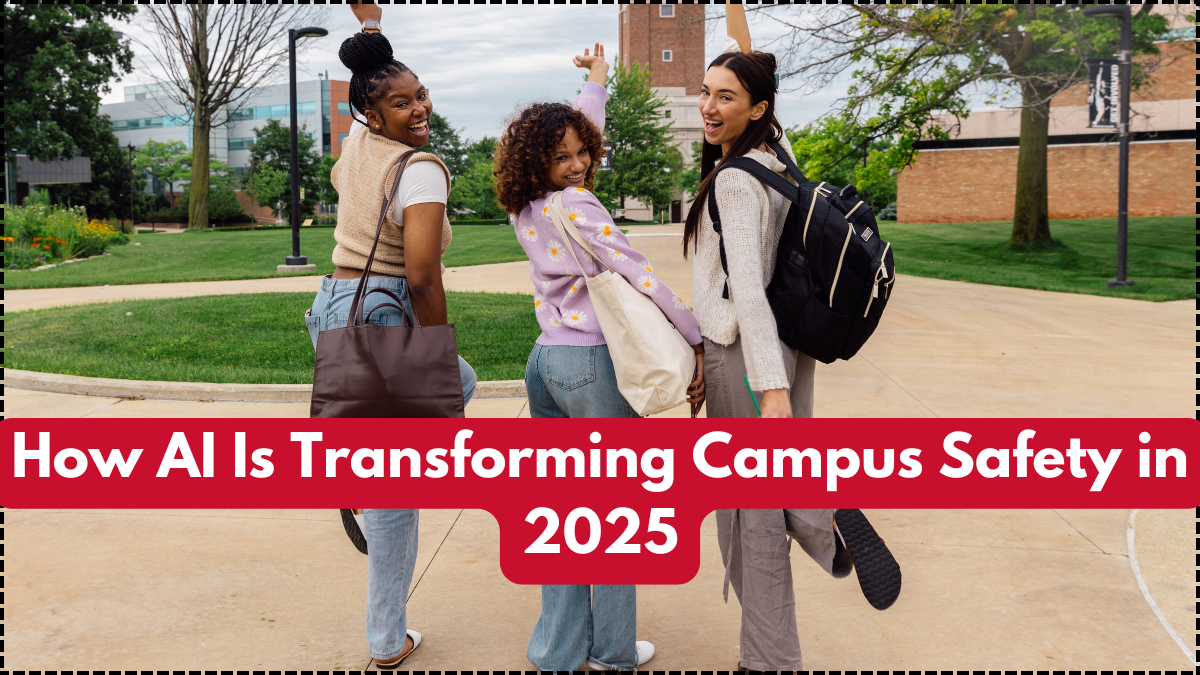In 2025, universities and colleges across the globe are witnessing a major transformation in how they protect students and staff. Campus Safety 2025 is no longer limited to patrolling guards and ID cards. Today, it integrates cutting-edge technologies like facial recognition, predictive analytics, and real-time threat detection. At the core of this evolution is AI surveillance, which is becoming the standard in securing educational environments with speed, accuracy, and intelligence.
As the number of students and staff on campus grows, so do the safety concerns. From preventing unauthorized access to detecting unusual behavior, artificial intelligence is offering institutions smarter and faster ways to respond to potential threats. Campus Safety 2025 now includes AI-driven monitoring systems that work 24/7, without fatigue or human error. Schools that once depended on outdated CCTV systems are now investing in AI-powered infrastructure to create safe and responsive environments.

The Role of AI Surveillance in Modern Campus Safety
AI surveillance is at the heart of the transformation. Unlike traditional cameras that simply record video, today’s smart systems analyze footage in real-time, detect anomalies, and trigger alerts before an incident occurs. Facial recognition software helps identify individuals with restricted access or potential threats. Behavioral algorithms can detect when someone is loitering, trespassing, or behaving erratically.
Key features of AI surveillance include:
-
Real-time facial recognition and identity matching
-
Automated emergency alerts for violence or intrusions
-
License plate tracking for campus vehicles
-
AI-guided patrol robots and drones for large campuses
-
Data integration with student ID systems and attendance logs
These features not only enhance security but also assist in maintaining accurate records and improving overall campus management. This integration of AI surveillance is quickly becoming the gold standard of Campus Safety 2025.
Benefits of AI in Campus Environments
Educational institutions that implement AI safety systems report increased confidence among students, parents, and faculty. Real-time monitoring reduces response time in emergencies, while automation ensures fewer gaps in surveillance coverage. Moreover, AI doesn’t just respond—it anticipates.
Here’s a table outlining how AI is changing campus security compared to traditional methods:
| Security Feature | Traditional Approach | AI-Powered Approach |
|---|---|---|
| Video Surveillance | Passive recording | Real-time anomaly detection & alerts |
| Campus Entry Control | Manual ID checks | Facial recognition and smart gates |
| Incident Response | Reactive and delayed | Predictive alerts and faster emergency action |
| Security Patrol | Human guards | AI robots and drone surveillance |
| Data Management | Paper/manual records | Automated logs linked with AI analysis |
By integrating AI, colleges can also save money long-term, reducing the need for a large on-site security team while maintaining higher accuracy and faster incident handling.
Challenges and Ethical Concerns
While Campus Safety 2025 promises great advancements, it also raises concerns about privacy and ethics. Some students fear constant monitoring could infringe on their rights, while others worry about biased facial recognition algorithms. Data security is another area that requires attention, as AI systems collect vast amounts of sensitive information.
To address these issues, institutions are required to establish transparent AI usage policies. Students are being informed about how data is collected and used, while third-party audits ensure that AI surveillance systems do not violate ethical standards. Colleges are also prioritizing secure storage and encryption of all footage and personal data.
Future Outlook for AI-Driven Safety
Looking ahead, AI will become even more integrated into campus operations. In Campus Safety 2025, we’re already seeing the emergence of systems that can predict violence based on behavioral data or detect weapons through machine learning models without human oversight. The shift toward preventive safety is becoming a reality, and AI is leading the way.
Colleges are also using AI surveillance to track attendance, monitor health emergencies, and manage crowd control during events. These features are not only making campuses safer but also more efficient.
Conclusion
Campus Safety 2025 is undergoing a remarkable transformation, powered by intelligent systems that can think, learn, and act in real-time. Through the use of AI surveillance, educational institutions are setting a new standard for security—one that is proactive, data-driven, and student-centered. While ethical concerns must be handled with care, the benefits of AI integration are undeniable. For today’s students, the future of campus safety is smarter, faster, and safer than ever before.
FAQs
How is AI used in campus safety in 2025?
AI is used for real-time surveillance, facial recognition, threat detection, and predictive analysis to prevent incidents before they occur.
What are the benefits of AI surveillance in schools?
AI surveillance improves response times, reduces human error, and provides 24/7 monitoring, making campuses significantly safer.
Are there any privacy concerns with AI in education?
Yes, students and faculty may have concerns about constant monitoring and data collection, but institutions are implementing privacy policies to manage this.
Can AI completely replace human security staff?
AI enhances security but does not entirely replace human personnel. Instead, it supports guards by handling surveillance and alerting them to real threats.
What is the future of campus safety with AI?
The future includes predictive safety systems, AI-powered emergency response, and more intelligent integrations with daily campus operations.
Click here to learn more